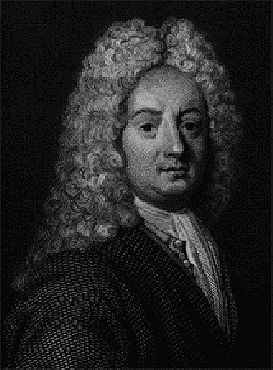Thomas Forster facts for kids
Thomas Forster (born 1683 – died 1738) was an English landowner and politician. He was a member of the House of Commons, which is like a parliament where laws are made. He was also a general for the Jacobite army during the 1715 Uprising. After the uprising, he had to leave England and went to France.
Contents
Early Life and Family
Thomas Forster was born in 1683. His father, also named Thomas Forster, was a Member of Parliament (MP) for Northumberland. An MP is a person elected to represent an area in the House of Commons.
Thomas went to Newcastle School and later studied at St John's College, Cambridge. In 1701, he inherited large family estates. However, these estates had many debts. Because of these debts, parts of the land had to be sold.
Political Career
In 1708, Thomas Forster became an MP for Northumberland. He was a member of the Tory political group. In 1709, he and his aunt sold the indebted family lands. They did not get much money from the sale.
He was re-elected as an MP in 1710 and 1713. He supported efforts to improve trade with Scotland. He also voted in favor of a bill about trade with France. He was elected again in 1715. However, his focus soon shifted to supporting the Jacobite cause.
Jacobite Uprising and Escape
The Forsters were related to the Radcliffes. The head of the Radcliffe family, Lord Derwentwater, was a leader of the 1715 Jacobite Rebellion. The Jacobites wanted to bring back the Stuart royal family to the throne.
Thomas Forster joined Lord Derwentwater in Northumberland. He led about 300 horsemen. He announced that the "Old Pretender" (James Francis Edward Stuart) was the rightful king. This happened after he avoided being arrested in London.
Even though he had no military experience, Forster was chosen to lead all the Jacobite forces in England. Under his command, a small island called Lindisfarne was captured. The Jacobites moved into Lancashire. But they were soon faced with the British Army.
In November 1715, Forster's forces were defeated at the Battle of Preston. He surrendered and was sent to Newgate Prison in London. However, he managed to escape from prison in 1716 and fled to France.
Because of his role in the rebellion, he was removed from Parliament. Many of his former friends, including Lord Derwentwater, were executed.
In France, Forster joined the Stuart court. He was given money and became the steward of the royal household. He was not allowed to return to England. His brother, John, took over the family estate in 1725.
Death
Thomas Forster died in Boulogne, France, in October 1738. He was 55 years old and had never married. His body was brought back to England and reburied at Bamburgh in December 1738.
Physical Description
In 1716, a royal announcement described Thomas Forster. It said he was: "A person of middle stature, inclining to be fat, well shaped except that he has stoops in the shoulders, fair complexioned, his mouth wide, his nose pretty large, his eyes grey, speaks the northern dialect."


